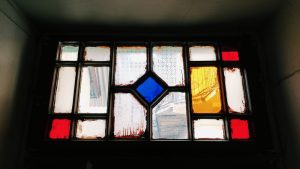Choosing the Right Materials for Stained Glass
Stained glass is a beautiful art form that has been around for centuries. It involves creating a design with different colors and shapes of glass, soldering them together with lead came, and then installing them in a window or other piece of artwork. However, choosing the right materials for stained glass can be a daunting process. In this blog post, we will explore the different types of glass, solder, and lead came to help you make the best decisions for your stained glass project.
Types of Glass
The first and most important decision when creating stained glass is choosing the type of glass to use. Here are some of the most popular types of glass used in stained glass:
1. Cathedral glass – This type of glass is transparent and can be found in a variety of colors. It is commonly used for creating patterns and designs since the color is consistent throughout the glass.
2. Opalescent glass – This type of glass is opaque and has a milky appearance. It can be found in a variety of colors and has a unique texture that can create a beautiful effect when used in stained glass.
3. Transparent glass – As the name suggests, this type of glass is completely transparent and can be found in different textures, such as smooth or rippled. It is the perfect choice for creating a stained glass window where you want the light to shine through.
4. Mirror glass – This type of glass is reflective and can be used to create a variety of effects in your stained glass project.
5. Dichroic glass – This is a high-tech type of glass that has a multi-colored appearance and can change colors depending on the angle of the light. It is a popular choice for creating modern and abstract designs.
When choosing glass for your stained glass project, you should also consider the thickness of the glass. Thicker glass is more durable, but it can be more difficult to cut and handle. Thinner glass is easier to work with, but it may be less durable over time.
Solder
Solder is the material used to fuse the pieces of glass together in a stained glass project. The most popular type of solder used in stained glass is made from a mixture of tin and lead. However, lead has been found to be toxic, so many people are now using alternative solders that contain little or no lead.
When choosing a solder for your stained glass project, you should consider the following:
1. The melting point – The melting point of the solder will determine the temperature at which it needs to be melted and fused with the glass. A lower melting point solder is easier to work with, but it may not be as strong and durable as a higher melting point solder.
2. The ratio of tin to lead – The ratio of tin to lead in the solder will determine its hardness and strength. A higher lead content will make the solder softer and more malleable, while a higher tin content will make it harder and more durable.
3. The color – The color of the solder can also be important for aesthetic reasons. Some people prefer a bright silver color, while others prefer a darker, antique look.
Lead Came
Lead came is the material used to hold the pieces of glass together in a stained glass project. It is a long, straight piece of lead that is shaped to fit the different pieces of glass. Lead came is more durable than other types of came, such as copper or zinc, but it can also be more difficult to work with.
When choosing lead came for your stained glass project, you should consider the following:
1. The width – The width of the lead came you choose will depend on the size and weight of the pieces of glass you are using. Thicker and heavier pieces of glass will require wider lead came to provide the necessary support.
2. The profile – The profile of the lead came refers to its shape. There are many different profiles available, including round, square, and flat. The profile you choose will depend on the look you are trying to achieve in your stained glass project.
3. The finish – The finish of the lead came can also be important for aesthetic reasons. Some people prefer a shiny finish, while others prefer a matte or antique finish.
Conclusion
Choosing the right materials for stained glass can be a challenging process, but it is important to make the right decisions in order to create a beautiful and durable piece of artwork. When selecting glass, solder, and lead came, consider their characteristics and how they will affect the overall look and durability of your project. With the right materials and techniques, anyone can create stunning stained glass artwork that will last for generations to come.
To learn more about our stained glass services, as well as our classes and workshops, contact us today!

